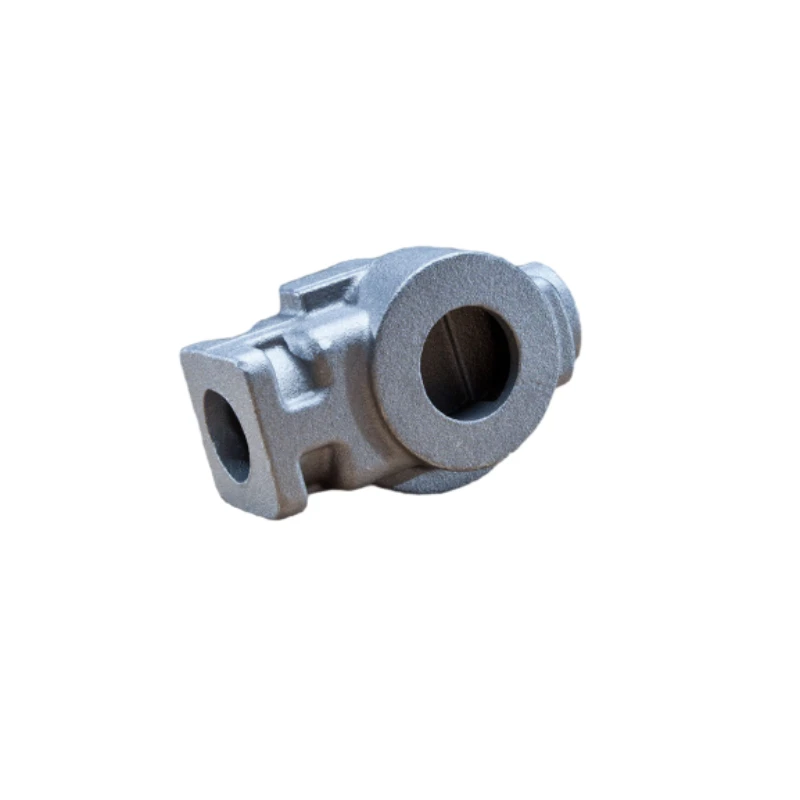die cast metal
The Art and Science of Die Cast Metal
Die casting is a highly efficient manufacturing process used to produce metal parts with remarkable precision and surface finish
. This method has been widely adopted across various industries, including automotive, aerospace, electronics, and consumer goods. The significance of die cast metal lies not only in its ability to create complex geometries but also in its cost-effectiveness and material efficiency.At the core of die casting is the use of molten metal, which is injected into a mold under high pressure. The most commonly used materials in die casting include aluminum, zinc, and magnesium, each offering distinct advantages. For instance, aluminum die castings are lightweight yet strong, making them ideal for automobile components. Zinc die castings, on the other hand, are corrosion-resistant and can be finished to a high level of detail, making them suitable for intricate parts like electronic housings.
The die casting process begins with the design of the die, which is a precision-engineered mold made from hardened steel. The design must take into consideration factors such as the part’s geometry, draft angles, and cooling channels to ensure efficient metal flow and heat dissipation during the casting process. Once the die is completed, it is mounted into a die casting machine, and molten metal is prepared.
Temperature control is crucial in the die casting process. The metal is heated to its molten state, typically between 700°C to 800°C for aluminum. Once at the desired temperature, the liquid metal is injected into the die at high velocity, filling the mold cavities. This rapid filling reduces the likelihood of defects such as air entrapment and ensures uniform density throughout the casting.
die cast metal

After the mold is filled, it is cooled to solidify the metal. The cooling time depends on the thickness of the part and the specific material used. Once cooled, the die opens, and the finished component is ejected. This entire process can take as little as a few seconds for each cycle, allowing for high production rates.
One of the major benefits of die cast metal is its excellent surface finish. Parts produced through this method often require little to no machining after casting, saving time and reducing overall costs. Additionally, die cast components have superior dimensional accuracy, with tolerances as tight as ±0.1 mm. This precision is crucial in applications where parts must fit together seamlessly.
Sustainability is becoming increasingly important in manufacturing, and die casting is no exception. Many die casting operations incorporate recycling practices, using scrap metal to produce new components. The process itself is also energy-efficient, requiring less energy compared to traditional metalworking methods. Furthermore, advancements in die casting technology, such as the introduction of die casting with alternative materials and the use of computer simulations, have further enhanced the environmental footprint of this manufacturing method.
In conclusion, die cast metal represents a fascinating blend of art and engineering. It enables manufacturers to create complex, high-quality components quickly and efficiently. As industries continue to evolve, the demand for innovative die casting solutions is expected to grow. With ongoing advancements in materials and technology, die casting will likely remain a cornerstone of modern manufacturing for years to come. Whether it's a component in a car engine or a housing for electronic devices, die cast metal will continue to play a pivotal role in shaping the products we rely on daily.
-
Precision Sheet Metal Stamping Manufacturer | Fast & ReliableNewsAug.01,2025
-
OEM Sand Cast Pump Valve Fittings - Baoding Hairun Machinery And Equipment Trading Co., Ltd.NewsAug.01,2025
-
Custom OEM Impellers | High Efficiency & PrecisionNewsAug.01,2025
-
OEM Sand Cast Pump Valve Fittings - Baoding Hairun Machinery | Customization, Quality AssuranceNewsAug.01,2025
-
OEM Sand Cast Pump Valve Fittings - Baoding Hairun Machinery And Equipment Trading Co., Ltd.NewsAug.01,2025
-
OEM Sand Cast Pump Valve Fittings - Baoding Hairun Machinery And Equipment Trading Co., Ltd.NewsJul.31,2025















